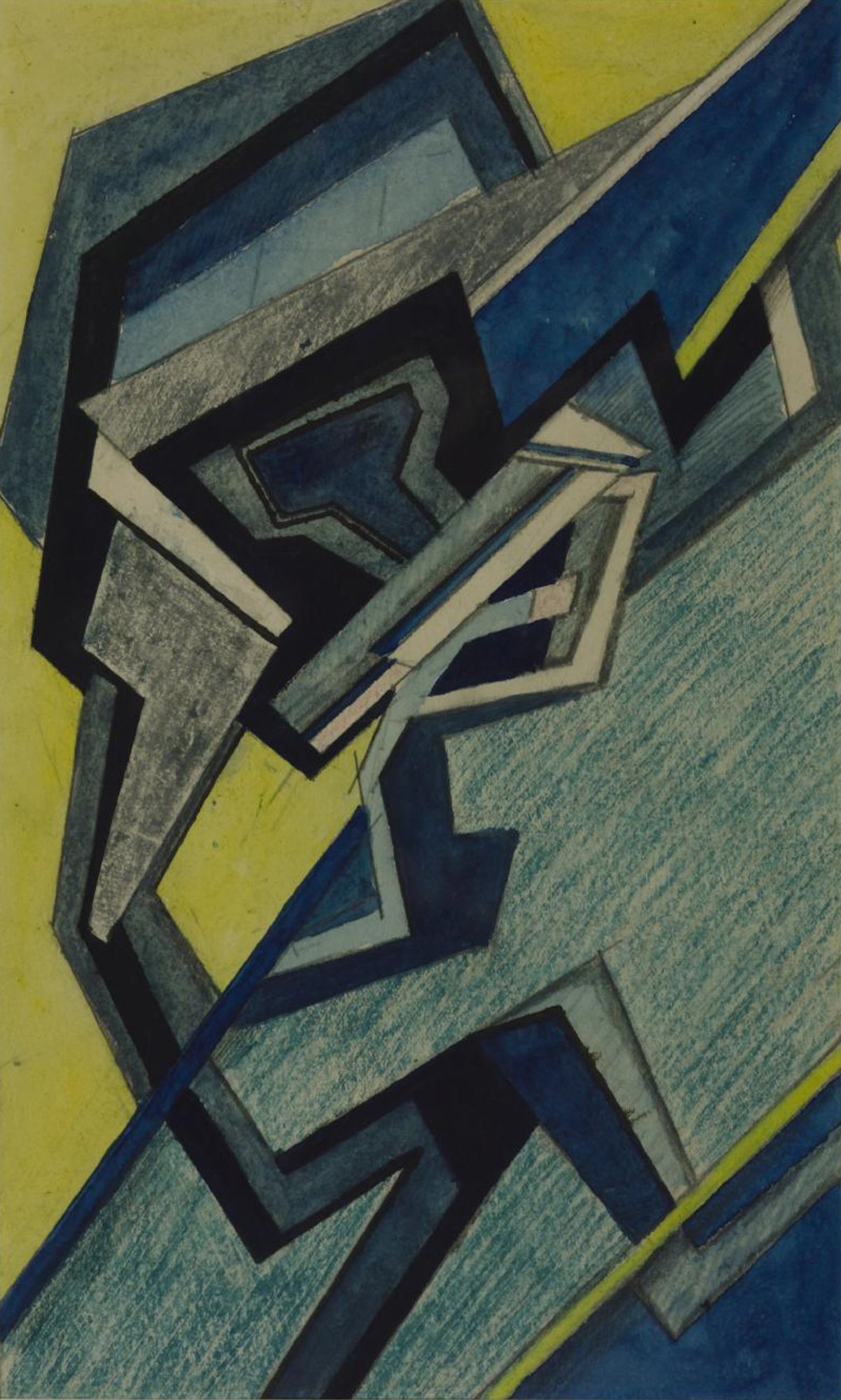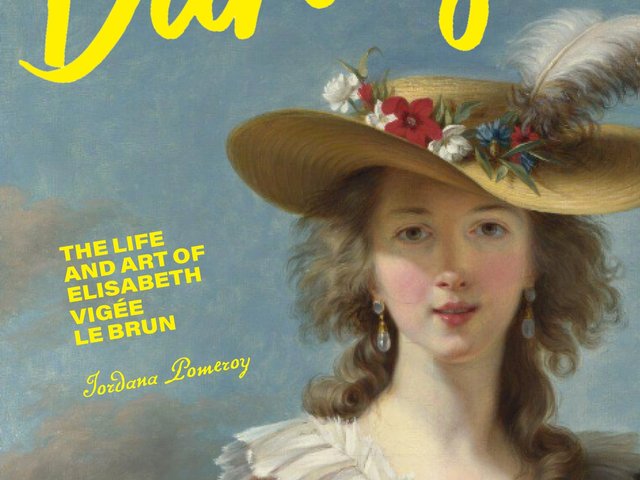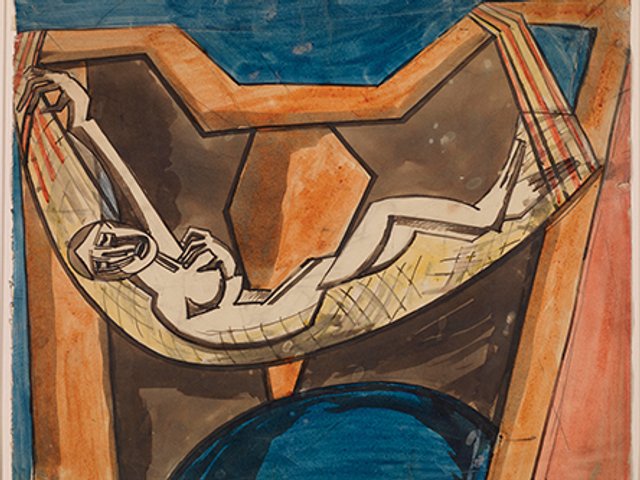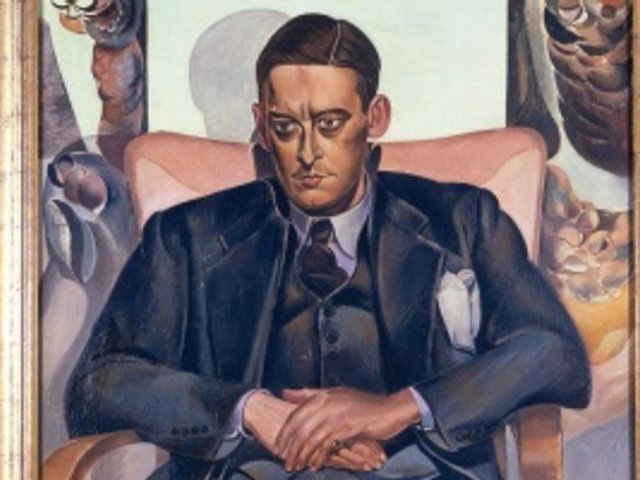If you look up “Vorticism” in handbooks of art, you will likely find prominent mention of two things: it was the first attempt on British soil to launch an avant-garde art movement, and it was woefully short-lived. It is often implied that these facts are not unrelated—that, precisely because it happened in stuffy old England, the Vorticist rebellion was doomed before it really got going. Confronted with the new art in a flurry of exhibitions starting in 1913, some reviewers were indeed underwhelmed. What they saw in Vorticist paintings—an energetic whirlwind of abstract interlocking shapes, often arranged around some invisible centre—seemed pointless juggling to them, modernity gone mad.
Readers of “Our Little Gang”, by the Canadian art historian James King, might be inclined to think there was yet another reason for the movement’s demise. For if the Vorticists were a “little gang” (a phrase coined by Ezra Pound, the movement’s poetic cheerleader), it was one distinctly of the toxic variety. When Jessica Dismorr (1885-1939), one of only two female Vorticists, said she could not afford to buy any of his paintings, Wyndham Lewis (1882-1957), Vorticism’s self-appointed guru, dashed off a cruel letter to her: “I find you a dull person, and the fact that I have known you for so long does not release me, in your company, from a sense of oppression.” Even in the movement’s heyday, Lewis did his best to diminish its followers. As King tells us, he tried to remove a painting by David Bomberg (1890-1957) from a 1913 exhibition in Brighton and simply painted over Atlantic City (around 1915), a work by Helen Saunders (1885-1963). If we apply a Vorticist lens to Vorticism itself, Lewis was the wobbly centre of the maelstrom, the not-so-calm eye of the storm caused by artists with often wildly different ambitions. A photograph included in King’s book shows Lewis looking like a feral Oscar Wilde, thick hair artistically parted in the middle, eyes intensely trained on the camera.
A new reality
From the beginning, being a Vorticist meant performing a tightrope act. Unlike the Italian Futurists, the Vorticists did not simply celebrate technological progress but remained critical of it; unlike the Cubists, they did not just fragment reality but tried to substitute a new one for it. According to King, they always sought to balance abstraction with representation. But representation of what, exactly? Lewis’s Workshop (around 1914-15), for example, places a series of angular shapes, vaguely suggestive of beams, windows, giant picture frames, ladders or the façades of houses, on top of and into each other. But what or where is this “workshop”? Is it Lewis’s studio? Or is it a portrait of a city in industrial England, as Lewis himself said it was?
A similar dilemma is posed by Bomberg’s In the Hold (around 1913-14), which presents a grid of regular small squares undermined by a mosaic of other shapes sharing the same colour (light blue, dark blue, red, orange). If it were not for the title, would we even know that the painting features people inside the belly of a ship experiencing, as King suggests, “the hazards of immigration”? Bomberg himself advanced a different explanation; he was, he said, thinking of dock workers inside the body of a steel ship.
Unlike her male peers, Saunders was more rigorously committed to experimentation. Dispensing with the crutches of descriptive titles, her art’s representational appeal came from within her work. In her Abstract Composition in Blue and Yellow (around 1915), the unwieldy cluster of squares, triangles and hexagons looks animated, as if it were a bizarre giant on thin, angular legs struggling up a steep hill: a kind of Sisyphus bowed down by his own weight.
King ends his gorgeously illustrated book with a look at William Roberts’s The Vorticists at the Restaurant de la Tour Eiffel: Spring, 1915, a retrospective group portrait painted in 1961-62 (and a facetious nod to Leonardo da Vinci’s The Last Supper). A monumentally proportioned Lewis appears as a flashy Jesus Christ presiding over a group of male disciples. To his right reclines Pound, eyes poetically turned skyward, sporting an impressive turban-like hairdo and a pre-Dalí moustache, its ends fussily curved up. King points out that the two female Vorticists, Dismorr and Saunders, are relegated to a corner here, too, having just entered the restaurant through a door in the upper left corner. No one’s paying attention to them.
King splendidly succeeds in his aim to restore Dismorr and Saunders to their rightful place at the centre of Vorticism. The First World War exacted a heavy toll on the Vorticists: the sculptor Henri Gaudier-Brzeska was killed in 1915, as was, two years later, Thomas Ernest Hulme, the movement’s theorist. But Dismorr, alone among her comrades, stayed true to the movement’s spirit. As Lewis was fawning over Hitler—the latter was a “man of peace,” he shockingly said in 1931, a folksy prophet of White Consciousness—she continued on her subversive path. Her Related Forms (1937) displays shapes both angular and round that, ironically, are not related but lie next to each other, like the pieces of an abandoned jigsaw puzzle. For Dismorr, the components of Vorticism, their edges grown smooth with age, were still there. The energy was not.
James King
“Our Little Gang”: The Lives of the Vorticists
Reaktion, 248pp, 77 col. and 19 b&w illus., £30/$45 (hb), published 16 June
• Christoph Irmscher is a critic and biographer






